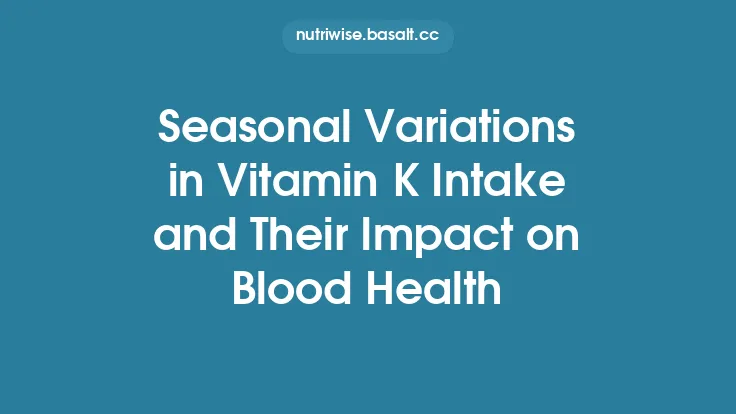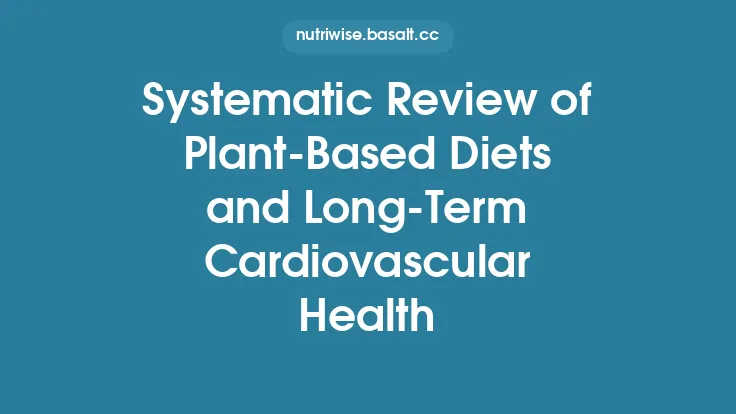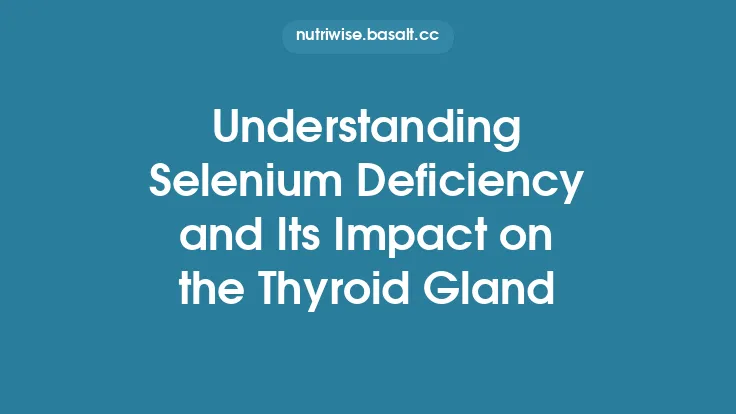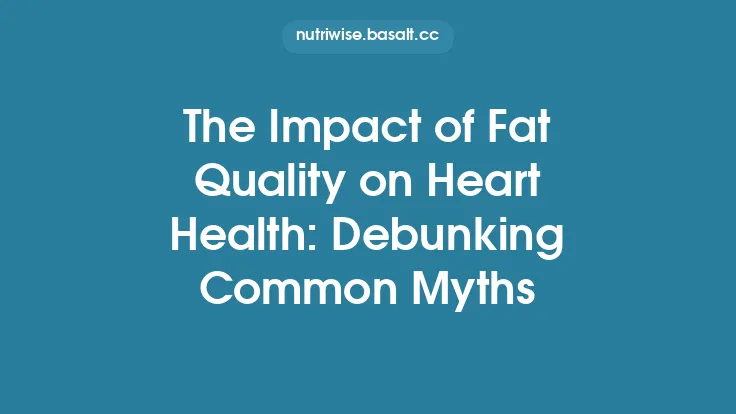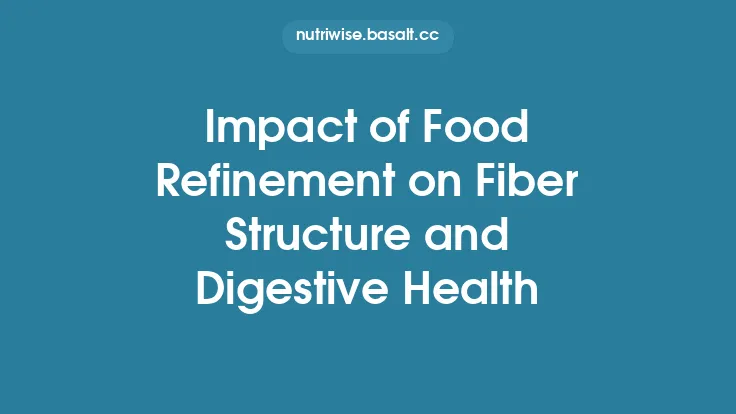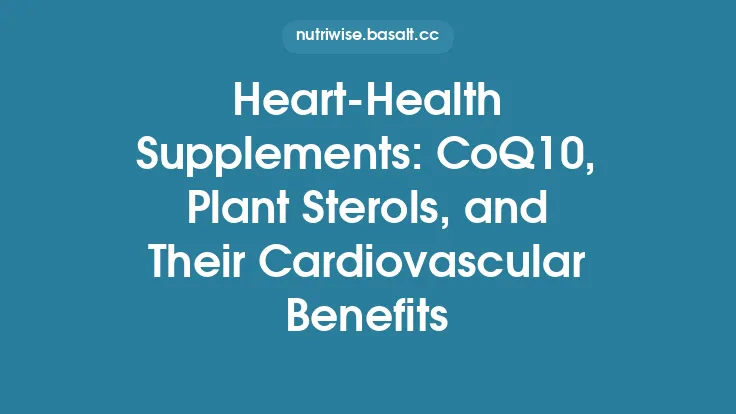Vitamin C (ascorbic acid) is widely recognized for its antioxidant capacity, yet its specific actions within the cardiovascular system extend far beyond generic free‑radical scavenging. The vascular endothelium—a thin monolayer lining every blood vessel—relies on a delicate redox balance to maintain tone, permeability, and resistance to inflammation. When this balance tips toward oxidative stress, the cascade of events that leads to endothelial dysfunction, atherosclerosis, and hypertension is set in motion. Vitamin C, by virtue of its chemical properties and its interaction with key signaling pathways, can intervene at multiple points in this cascade, offering a protective shield for blood vessels throughout the lifespan.
Mechanisms of Oxidative Stress in the Vascular System
The vasculature is constantly exposed to reactive oxygen species (ROS) generated from several sources:
- NADPH oxidases (NOX family) – primary producers of superoxide (O₂⁻) in endothelial and smooth‑muscle cells.
- Mitochondrial electron transport chain – leaks electrons that reduce oxygen to superoxide, especially under hypoxic or high‑energy demand conditions.
- Xanthine oxidase – contributes to ROS during purine metabolism, particularly in ischemic tissue.
- Uncoupled endothelial nitric oxide synthase (eNOS) – when cofactors such as tetrahydrobiopterin (BH₄) are depleted, eNOS generates superoxide instead of nitric oxide (NO).
Excess ROS reacts with NO, forming peroxynitrite (ONOO⁻), a potent oxidant that impairs vasodilation, oxidizes lipids, and damages proteins. The net result is reduced NO bioavailability, increased vascular tone, and a pro‑inflammatory environment that favors plaque formation.
Vitamin C as a Potent Endothelial Antioxidant
Vitamin C’s redox chemistry makes it uniquely suited to counteract vascular ROS:
- Direct Scavenging – As a water‑soluble electron donor, ascorbate rapidly reduces superoxide, hydrogen peroxide, and hydroxyl radicals. Its rate constants (k ≈ 10⁹ M⁻¹ s⁻¹ for superoxide) are comparable to those of endogenous enzymes such as superoxide dismutase (SOD).
- Regeneration of Other Antioxidants – Ascorbate can recycle oxidized vitamin E (α‑tocopheroxyl radical) back to its active form, preserving lipid membrane integrity. This recycling is especially important in the endothelial cell membrane where lipid peroxidation initiates atherogenic signaling.
- Metal Chelation – By binding transition metals (Fe²⁺, Cu⁺), vitamin C limits the Fenton reaction that would otherwise generate highly reactive hydroxyl radicals from hydrogen peroxide.
Collectively, these actions keep the intracellular redox milieu within a range that supports normal endothelial signaling.
Nitric Oxide Bioavailability and Vascular Tone
The relationship between vitamin C and NO is central to vascular health:
- Preservation of eNOS Coupling – Ascorbate stabilizes BH₄, the essential cofactor for eNOS. When BH₄ is oxidized, eNOS becomes uncoupled, producing superoxide instead of NO. Vitamin C reduces BH₄ radicals back to BH₄, maintaining eNOS coupling and sustained NO production.
- Scavenging of Peroxynitrite – By reacting with ONOO⁻, vitamin C limits nitration of tyrosine residues on proteins, a modification that impairs endothelial function.
- Enhancement of Endothelial‑Derived Hyperpolarizing Factor (EDHF) – Emerging data suggest that ascorbate can augment EDHF‑mediated vasodilation, providing an additional NO‑independent pathway for blood‑vessel relaxation.
Through these mechanisms, vitamin C helps preserve the delicate balance between vasodilatory and vasoconstrictive forces, supporting normal blood pressure and flow.
Prevention of LDL Oxidation and Atherogenesis
Low‑density lipoprotein (LDL) oxidation is a pivotal early event in atherosclerotic plaque development. Oxidized LDL (oxLDL) is taken up by macrophages via scavenger receptors, leading to foam‑cell formation and plaque growth. Vitamin C intervenes at several stages:
- Inhibition of LDL Oxidation – Ascorbate, especially when present in the subendothelial space, directly reduces lipid peroxyl radicals, slowing the conversion of native LDL to oxLDL.
- Protection of Endothelial Glycocalyx – The glycocalyx, a carbohydrate‑rich layer on the endothelial surface, is vulnerable to oxidative degradation. Vitamin C preserves its integrity, reducing LDL infiltration into the intima.
- Modulation of Scavenger Receptor Expression – In vitro studies demonstrate that ascorbate down‑regulates CD36 and SR‑A1 expression on macrophages, decreasing their propensity to internalize oxLDL.
By curbing LDL oxidation and subsequent foam‑cell formation, vitamin C contributes to a slower progression of atherosclerotic lesions.
Modulation of Inflammatory Pathways in the Vessel Wall
Chronic low‑grade inflammation fuels vascular disease. Vitamin C influences key inflammatory mediators:
| Pathway | Vitamin C Effect | Consequence for Vessels |
|---|---|---|
| NF‑κB (nuclear factor‑κB) | Inhibits IκB kinase activation, reducing NF‑κB nuclear translocation | Lower expression of VCAM‑1, ICAM‑1, and cytokines (IL‑6, TNF‑α) |
| MAPK (p38, JNK) | Attenuates phosphorylation cascades | Diminished smooth‑muscle cell proliferation and migration |
| NLRP3 inflammasome | Reduces ROS‑driven activation | Decreased IL‑1β release and plaque instability |
These anti‑inflammatory actions complement the antioxidant role, creating a synergistic environment that discourages endothelial activation and plaque rupture.
Impact on Hypertension and Blood Pressure Regulation
Epidemiological and interventional studies have linked higher plasma vitamin C concentrations with lower systolic and diastolic blood pressures. Mechanistic explanations include:
- Improved Endothelial NO Production – As described, enhanced NO leads to vasodilation and reduced peripheral resistance.
- Reduced Arterial Stiffness – By limiting collagen cross‑linking through oxidative pathways, vitamin C helps maintain arterial compliance.
- Renin‑Angiotensin‑Aldosterone System (RAAS) Modulation – Preliminary data suggest that ascorbate can blunt angiotensin II‑induced ROS generation, tempering vasoconstriction.
Collectively, these effects translate into modest but clinically meaningful reductions in blood pressure, especially in individuals with suboptimal dietary intake.
Synergy with Endogenous Antioxidant Enzymes
Vitamin C does not act in isolation; it works hand‑in‑hand with the body’s own antioxidant defenses:
- Superoxide Dismutase (SOD) – By converting superoxide to hydrogen peroxide, SOD creates a substrate that vitamin C can further reduce to water, completing the detoxification cycle.
- Catalase and Glutathione Peroxidase (GPx) – Ascorbate can regenerate reduced glutathione (GSH) from its oxidized form (GSSG), sustaining GPx activity.
- Peroxiredoxins – Vitamin C helps maintain the reduced state of peroxiredoxin cysteine residues, preserving their ability to scavenge peroxides.
This cooperative network amplifies the overall antioxidant capacity of the vascular wall, ensuring resilience against acute oxidative insults such as post‑prandial lipemia or exercise‑induced ROS spikes.
Clinical Evidence Linking Vitamin C Intake to Cardiovascular Outcomes
A substantial body of research, ranging from observational cohorts to randomized controlled trials (RCTs), supports the vascular benefits of vitamin C:
- Prospective Cohort Studies – Large population studies (e.g., the Nurses’ Health Study, the Health Professionals Follow‑up Study) have consistently shown an inverse relationship between plasma ascorbate levels and incidence of coronary heart disease (CHD). Adjusted hazard ratios typically range from 0.70 to 0.85 for the highest quartile of vitamin C status.
- Meta‑Analyses of RCTs – A 2021 meta‑analysis of 30 trials (n ≈ 12,000) reported that daily supplementation with ≥500 mg of vitamin C reduced systolic blood pressure by an average of 3.5 mm Hg and diastolic pressure by 2.1 mm Hg compared with placebo. The effect was more pronounced in hypertensive participants.
- Endothelial Function Trials – Flow‑mediated dilation (FMD) studies demonstrate that short‑term (2–4 weeks) high‑dose vitamin C (1 g/day) improves brachial artery FMD by 1.5–2.0 % in smokers and patients with metabolic syndrome, indicating restored endothelial responsiveness.
- Atherosclerotic Progression Imaging – In a 2‑year carotid intima‑media thickness (CIMT) trial, participants receiving 1 g/day vitamin C alongside standard care exhibited a slower CIMT increase (0.02 mm vs. 0.06 mm in controls), suggesting attenuation of plaque development.
While the magnitude of benefit varies with baseline status, dosage, and co‑existing risk factors, the convergence of epidemiologic and interventional data underscores a reproducible protective role for vitamin C in cardiovascular health.
Practical Recommendations for Optimizing Vascular Protection
- Target Plasma Ascorbate – Aim for a fasting plasma concentration of ≥50 µmol/L, a threshold associated with reduced oxidative stress markers. This typically corresponds to a daily intake of 300–500 mg of vitamin C from diet and/or supplements for most adults.
- Timing with Meals – Consuming vitamin C with meals enhances its absorption (via sodium‑dependent vitamin C transporters, SVCT1) and facilitates its interaction with dietary polyphenols, further bolstering antioxidant capacity.
- Consider Split Dosing – Because renal excretion limits plasma peaks, dividing the total daily dose into 2–3 portions (e.g., 250 mg three times daily) maintains steadier plasma levels, which may be more effective for endothelial support.
- Synergistic Lifestyle Factors – Pair vitamin C intake with regular aerobic exercise, which up‑regulates endogenous antioxidant enzymes, and with a diet rich in flavonoid‑containing fruits and vegetables that can recycle ascorbate.
- Monitoring in High‑Risk Populations – Patients with chronic kidney disease, smokers, or those on high‑dose statins often exhibit increased oxidative stress; periodic assessment of plasma ascorbate can guide personalized supplementation strategies.
Potential Risks and Contraindications
Vitamin C is generally safe, but certain considerations are warranted:
- Renal Calculi – Excessive doses (>2 g/day) may increase urinary oxalate, a risk factor for calcium oxalate kidney stones in susceptible individuals.
- Gastrointestinal Disturbance – Doses above 1 g can cause abdominal cramping or diarrhea, potentially limiting adherence.
- Drug Interactions – High‑dose vitamin C may affect the pharmacokinetics of certain chemotherapeutic agents (e.g., bortezomib) and anticoagulants (by altering platelet function). Clinicians should review patient medication lists before initiating large supplemental regimens.
Overall, when used within the ranges supported by clinical evidence, vitamin C offers a low‑risk, high‑reward strategy for protecting blood vessels and supporting cardiovascular health.
In summary, vitamin C’s impact on the cardiovascular system is multifaceted: it directly neutralizes vascular ROS, preserves nitric oxide signaling, prevents LDL oxidation, dampens inflammatory cascades, and synergizes with the body’s own antioxidant enzymes. Robust epidemiologic and interventional data confirm that maintaining adequate vitamin C status translates into measurable improvements in endothelial function, blood pressure control, and atherosclerotic progression. By integrating thoughtful dietary choices, appropriate supplementation, and lifestyle measures, individuals can harness the full vascular protective potential of this essential micronutrient.
